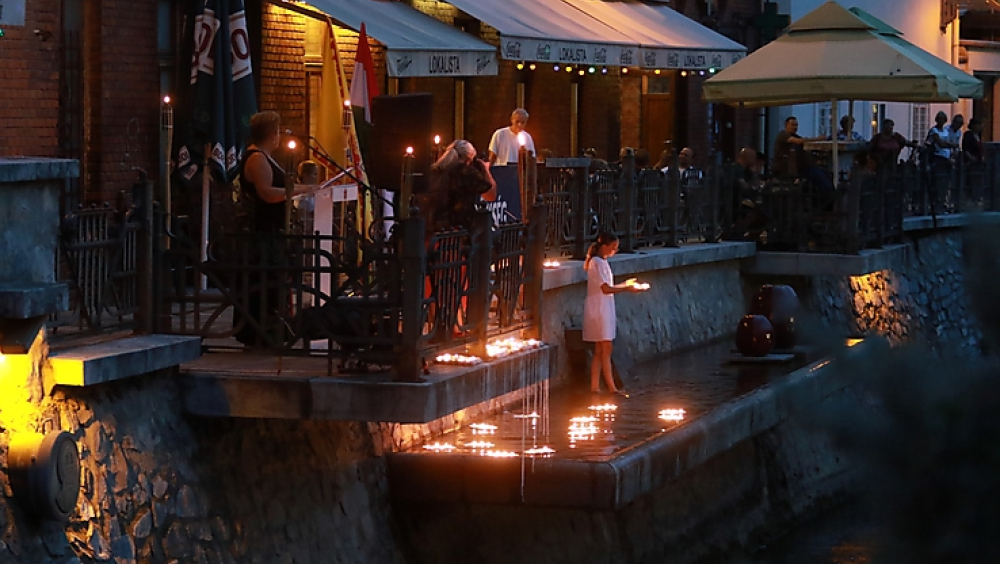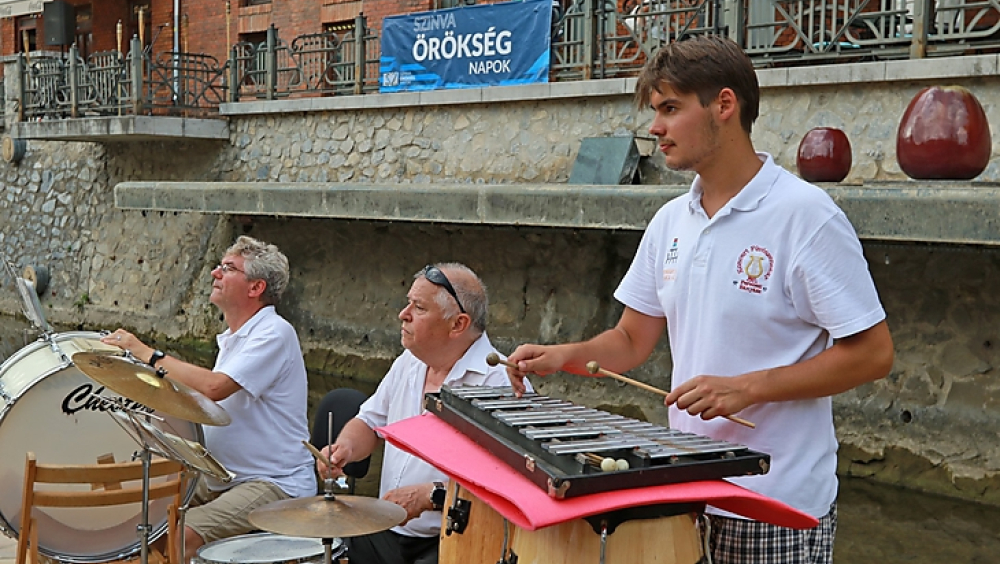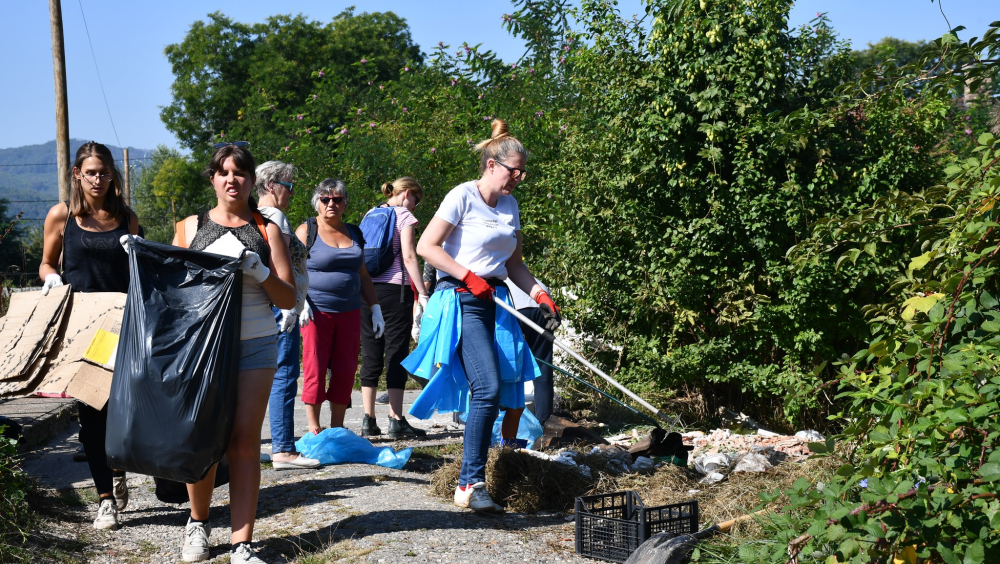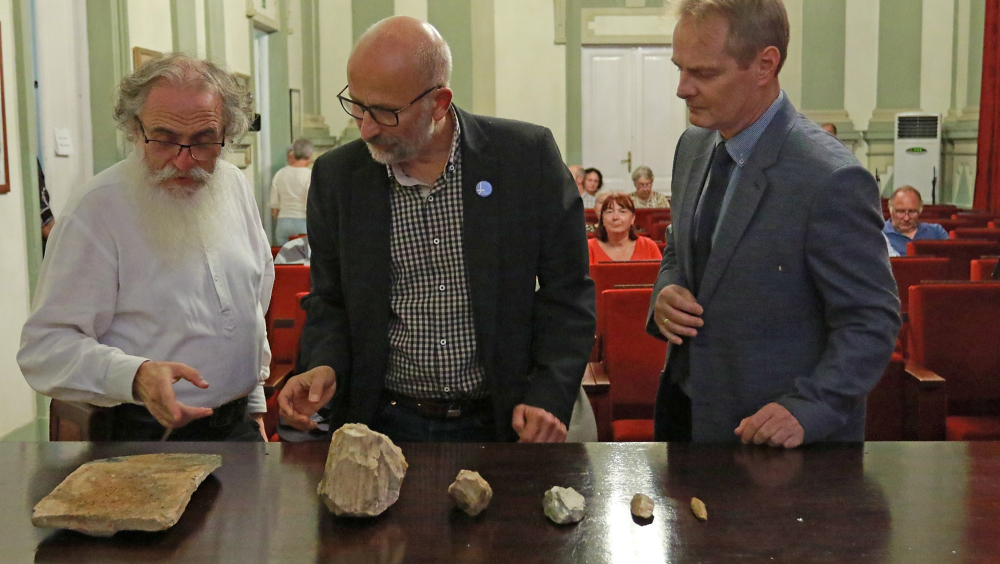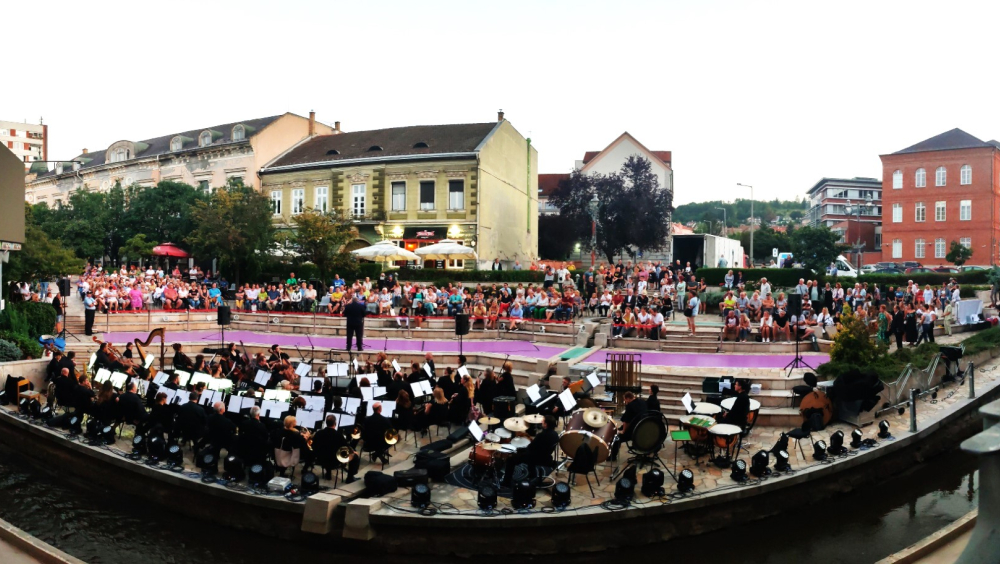Szinva Heritage Days - the legend of a creek
Our grandchildren want to see it too!
Miskolc was one of Hungary's most important heavy industry centers in the last century, but has lost a lot in the past decades. Due to the crisis that started before the end of the century, its factories closed their doors, the collapsing industry buried the livelihood of sixty thousand city dwellers. The city's population has decreased from 210,000 to 150,000 in the last three decades.
This situation resulted in the city having to rethink its operation and find a new way to ensure the prosperity of the people living here. This new path meant redefining itself and finding its future in its past, its unique cultural and natural heritage.
The essence of this is that, by using a specific, local method of culture-based urban development, the heritage of the past is revealed and made valuable to the population.
Part of this is the Szinva Heritage Days, which started in the fall of 2022. The Szinva stream is born where the sign indicating the beginning of the city stands and gives its life to a river at the other end. The inhabitants of this city live in 22 kilometers between the two signs.
The Szinva Heritage Days build on this special feature and build the community of residents. Does this by teaching more about their history, natural and cultural heritage. It is particularly important that the municipalities that preserve the culture of the ten European nationalities that make up the city, the city's civil communities, the municipality of Miskolc, and educational and cultural institutions are supporters of the program.
The three-day event creates a real urban celebration for the participants with a scientific conference, community activities, and the introduction of young talents on the stages set up in each part of the city.
The Szinva is a stream that is born where the sign indicating the beginning of the city stands and gives its life to a river where the city border ends. The 24 kilometers between the two signs surround a city, the history of Miskolc's 150,000 inhabitants.
Miskolc is currently home to 150,000 people. Its unique natural environment, built heritage, cultural and industrial historical memories determine the everyday life of the people living here. Its history began in ancient times: when people first came to this region and chose it as their home. Forests and fields fed by abundant water sources provided them with excellent living conditions, limestone and caves carved out of it provided security for them. The primitive human culture that was established here is known to the world as "Szeleta". Later many different people settled along the banks of the Szinva stream.
From stories of different ages, we know exactly what characterized the inhabitants here.
It is clear that this city has always been inhabited by very hospitable and accommodating people, who gladly welcomed strangers from far away, were always open to other cultures, and various religious congregations found a home here. Ten European nationalities currently live in the city and have their own minority municipality. In its downtown, ten church towers stretch towards the sky, indicating that the people of Miskolc have built many houses for God. The city also owes its unique diverse culture to the people who come here. It is no coincidence that the first stone theater playing in Hungarian language was also built here in 1823, financed by the donations of the town's residents. Sándor Ferenczy, the world-famous psychoanalyst, who founded a professional school and was a direct colleague of Sigmund Freund, saw the light of day here. Just like Academy Award-winning screenwriter Emerich Pressburger and Béla Jenbach, the author of the libretto for the most popular Hungarian operetta in the world, The Queen of Czardas. And many more famous personalities who have built the reputation of their city.
But let's return to the Szinva stream. It originates in the Bükk Mountains surrounding the city from the west. It served the people living here and the city itself at all times. Its water not only gave life, but also built the city throughout its history. Created an industry by driving the wheels of nearly fifty mills grinding the grain brought from faraway lands. At the end of 18th century, its power served to create the first iron metallurgy industrial facility in Hungary – which is still open for visitors.
This marked the beginning of a new era in the history of the city: the merchant industry was replaced by heavy industry. It made the city rich, created a secure livelihood and a predictable future for its residents. Then, the international crisis of the 1990s forced the industry of Miskolc to its knees. Since then, the city's population has been steadily declining, and many are trying their luck elsewhere.
Miskolc was the first among Hungarian cities to redefine itself with the help of its past and significant cultural heritage. As a result, it applied for the title of European Capital of Culture, came second out of 11 Hungarian cities, and was awarded the title of Hungarian Capital of Culture. All this was achieved with the support of the townspeople. As a result of the collaboration, the social capital became stronger, which can be measured mostly in the cooperation of the communities and the strengthening of their relations with each other and the city.
A stream beginning its life where city borders do, and finish it where the houses of that city end is probably unique. It is a huge opportunity to show the city's past, built, natural and unique cultural heritage to the city's current residents and visitors from far away. After this recognition, the Szinva Heritage Foundation was established in 2020.
Passing through the city districts, the Szinva is a special symbol of unity and coexistence, which connects the city's residents with more than 90 bridges over a length of 24 kilometers.
Every year, the foundation organizes the Szinva Heritage Days, the purpose of which aligns with those of the European Heritage Days: to show the special cultural values of the city, to discover the gastronomic values of the area, to strengthen the sense of belonging to the community among the city's residents, and it considers its priority task to introduce the city's values to the visitors.
The Szinva Heritage Days were first held in 2022 and then in 2023. During the three-day holiday, students from Miskolc and local performing arts present themselves to the townspeople at several points along the Szinva stream. In this program, the city celebrates the talented children studying in its art schools and celebrates the continuation of the city's cultural heritage.
Another important event of the Szinva Heritage Days is the annual scientific conference hosted by the Territorial Committee of the Hungarian Academy of Sciences. As part of this, professionals working in different fields give presentations to the public every year. In 2022, lectures were given on the birth of the Szinva stream, the constant flood threats in the history of the city, and the preservation of life-giving karst water. Last year, the topic was the special archaeological heritage of the Szinva valley, while in September 2024 the topic of the scientific and educational meeting will be the preservation of the wildlife of the Szinva.
One of the main programs of the Szinva Heritage Days is the community cleaning of the Szinva stream and the renovation of bridges, in which civil organizations, communities participate.
Szinva Heritage Days is realized in cooperation with the municipality of Miskolc, ethnic communities, civil organizations and the city's cultural center.
In 2005, Miskolc applied to become the European Capital of Culture in 2010. The application became second in the competition of 11 Hungarian cities, but the Hungarian public voted the city's application as the best. Miskolc gained recognition for its extremely rich cultural heritage and the strong local patriotism of the townspeople.
In 2008, the city was awarded the title of Hungarian City of Culture, which it earned by realizing a European idea. One of the possible ways to save settlements in economical crisis is cultural urban development, which makes the city an attractive destination from both a touristic and an economic point of view.
The Szinva Heritage Days are one of the prominent programs of this cultural construction, which, held in September, draws the attention to the preservation of the common European values. The population contributes to this by protecting their own heritage and educating both the young and the adult population. Scientific conferences dealing with the city's values and special heritage are held, every year focusing on a different central topic.
Miskolc is a member of the 100 climate-neutral and intelligent cities mission. The Szinva Heritage Days not only offer scientific and cultural programs, but also organize community activities: participants can help clean the stream, at the same time, they renovate a bridge each year.
On the stages along the stream, young and senior, professional and amateur bands, as well as members of 10 European nationalities with minority self-governments in the city perform.
The following video is a good example of this: the ethnic communities living here sing one of the iconic songs of Christmas, sending a message to Europe that there is a Hungarian city where people have been living in peace for centuries: https://www.youtube.com/watch?v=WSSQHzJ6_wA.
